Microsoft Office Timeline
This is a history of the various versions of Microsoft Office, consisting of a bundle of several different applications which changed over time.
2021, October 5
Microsoft Office 2021
Microsoft Office 2021 (third release codenamed Office 16) is a version of the Microsoft Office suite of applications for the Microsoft Windows and macOS operating systems. It was released on October 5, 2021, along with Windows 11, and replaced Office 2019. A successor, Microsoft Office 2024 is expected to be rolled out in the second half of 2024.
Office 2021 retains the same major version number of 16 that previous versions of Office had. It introduces new dynamic arrays, XLOOKUP features for Excel, full dark-mode support and performance improvements. Support for retail versions of Office 2021 will end on October 13, 2026; unlike older versions of Office, there is no extended support period.

2018, September 24
Microsoft Office 2019
Microsoft Office 2019 (second release codenamed Office 16) is a version of Microsoft Office for both Windows and Mac. It replaces Office 2016 and was replaced by Office 2021 on October 5, 2021. It was unveiled on April 27, 2018, for Windows 10 and June 12, 2018, for macOS, and launched on September 24, 2018. Some features that had previously been restricted to Office 365 subscribers are available in this release. Office 2019 retains the same major version number of 16 that Office 2016 had, making it the second perpetual release of Office 16. Microsoft ended mainstream support for Office 2019 on October 10, 2023. Unlike other versions of Microsoft Office, Office 2019 will only get two years of extended support, which means that support for Office 2019 will end on the same day as support for Office 2016 and Windows 10, on October 14, 2025.
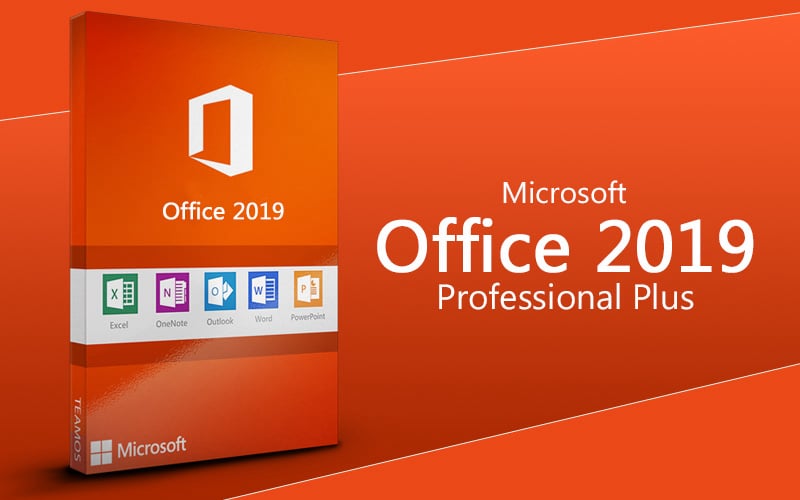
2015, September 22
Microsoft Office 2016
Microsoft Office 2016 (codenamed Office 16) is a version of the Microsoft Office productivity suite, succeeding both Office 2013 and Office for Mac 2011 and preceding Office 2019, which in turn was succeeded by Office 2021 for both platforms. It was released on macOS on July 9, 2015, and on Microsoft Windows on September 22, 2015, for Office 365 subscribers. Mainstream support ended on October 13, 2020, and extended support for most editions of Office 2016 will end on October 14, 2025, the same day as Windows 10. The perpetually licensed version on macOS and Windows was released on September 22, 2015. Office 2016 requires Windows 7 SP1, Windows Server 2008 R2 SP1 or OS X Yosemite at the minimum. It is the last version of Microsoft Office to support Windows 7 SP1, Windows Server 2008 R2 SP1, Windows 8, Windows Server 2012, Windows 8.1, Windows Server 2012 R2, Windows 10 RTM–1803 and Windows Server 2016 and Windows 11 until version 23H2; as the following version, Microsoft Office 2019 only supports Windows 10 version 1809, Windows Server 2019 or later.
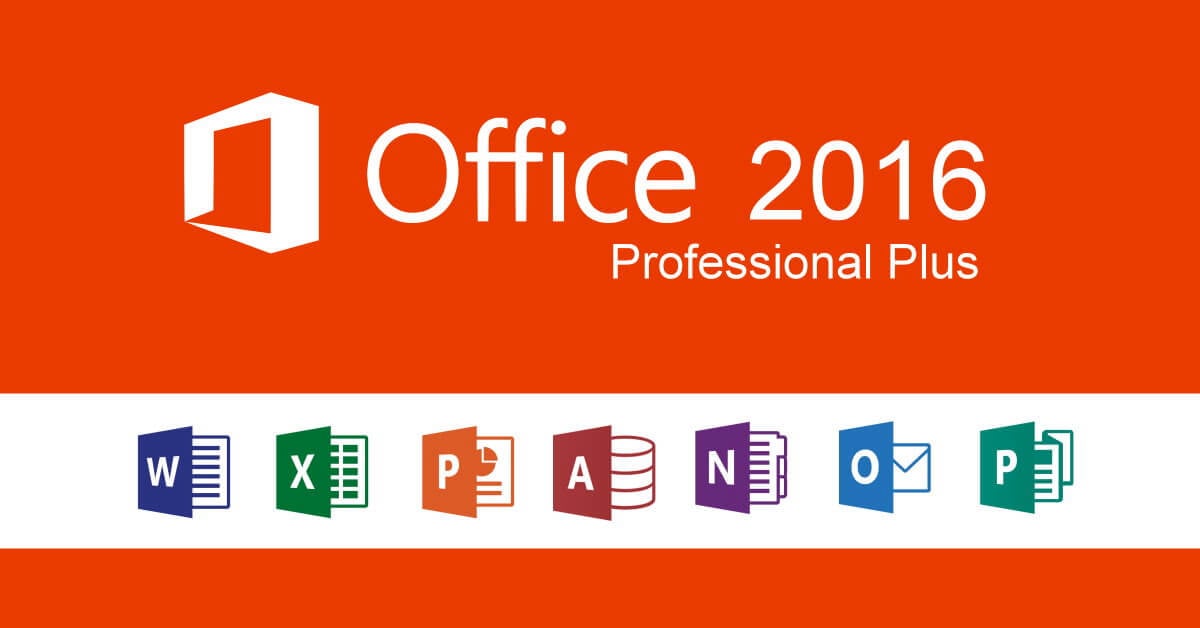
2013, January 29
Microsoft Office 2013
Microsoft Office 2013 (codenamed Office 15) is a version of Microsoft Office, a productivity suite for Microsoft Windows. It is the successor to Microsoft Office 2010 and the predecessor to Microsoft Office 2016. Unlike with Office 2010, no OS X equivalent was released.
Microsoft Office 2013 includes extended file format support, user interface updates and support for touch among its new features and is suitable for IA-32 and x64 systems.
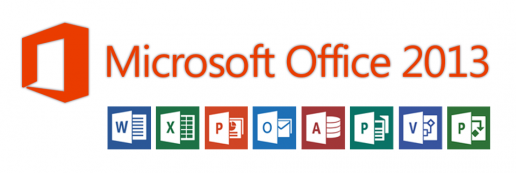
2010, June 15
Microsoft Office 2010
Microsoft Office 2010 (codenamed Office 14) is a version of Microsoft Office for Microsoft Windows unveiled by Microsoft on May 15, 2009, and released to manufacturing on April 15, 2010, with general availability on June 15, 2010, as the successor to Office 2007 and the predecessor to Office 2013. The macOS equivalent, Microsoft Office 2011 for Mac was released on October 26, 2010.
Office 2010 introduces user interface enhancements including a Backstage view that consolidates document management tasks into a single location. The ribbon introduced in Office 2007 for Access, Excel, Outlook, PowerPoint, and Word is the primary user interface for all applications in Office 2010 and is now customizable. Collaborative editing features that enable multiple users to share and edit documents; extended file format support; integration with OneDrive and SharePoint; and security improvements such as Protected View, a sandbox to protect users from malicious content are among its other new features. It debuted Office Online, free Web-based versions of Excel, OneNote, PowerPoint, and Word. A new Office Starter 2010 edition replaces Microsoft Works. Office Mobile 2010, an update to Microsoft's mobile productivity suite was released on May 12, 2010 as a free upgrade from the Windows Phone Store for Windows Mobile 6.5 devices with a previous version of Office Mobile installed.

2007, January 30
Microsoft Office 2007
Microsoft Office 2007 (codenamed Office 12) is an office suite for Windows, developed and published by Microsoft. It was officially revealed on March 9, 2006 and was the 12th version of Microsoft Office. It was released to manufacturing on November 3, 2006; it was subsequently made available to volume license customers on November 30, 2006, and later to retail on January 30, 2007, shortly after the completion of Windows Vista. The ninth major release of Office for Windows, Office 2007 was preceded by Office 2003 and succeeded by Office 2010. The Mac OS X equivalent, Microsoft Office 2008 for Mac, was released on January 15, 2008.
Office 2007 introduced a new graphical user interface called the Fluent User Interface, which uses ribbons and an Office menu instead of menu bars and toolbars. Office 2007 also introduced Office Open XML file formats as the default file formats in Excel, PowerPoint, and Word. The new formats are intended to facilitate the sharing of information between programs, improve security, reduce the size of documents, and enable new recovery scenarios.
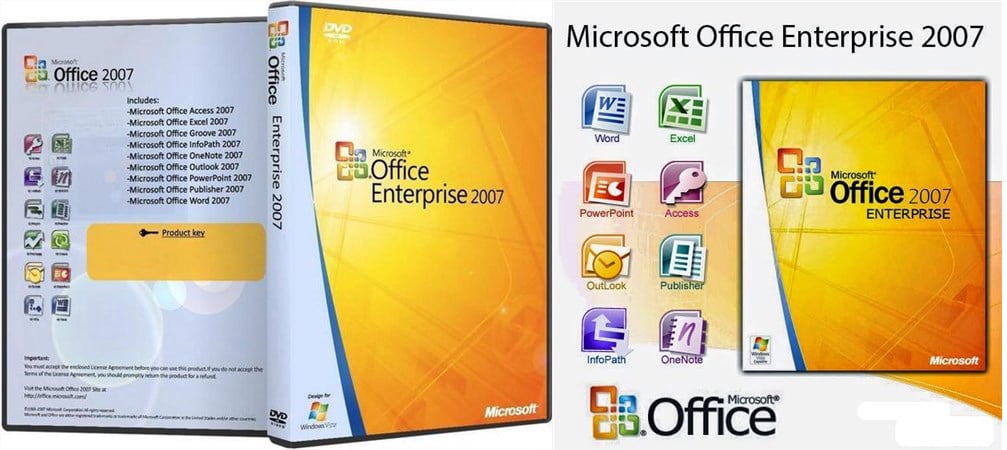
2003, August 19
Microsoft Office 2003
Microsoft Office 2003 (codenamed Office 11) is an office suite developed and distributed by Microsoft for its Windows operating system. Office 2003 was released to manufacturing on August 19, 2003, and was later released to retail on October 21, 2003, exactly two years after the release of Windows XP. It was the successor to Office XP and the predecessor to Office 2007. The Mac OS X equivalent, Microsoft Office 2004 for Mac was released on May 11, 2004.
New features in Office 2003 include information rights management; new collaboration features; improved support for SharePoint, smart tags, and XML; and extended use of Office Online services. Office 2003 introduces two new programs to the Office product lineup: InfoPath, a program for designing, filling, and submitting electronic structured data forms; and OneNote, a note-taking program for creating and organizing diagrams, graphics, handwritten notes, recorded audio, and text. It also introduces the Picture Manager graphics software to open, manage, and share digital images.
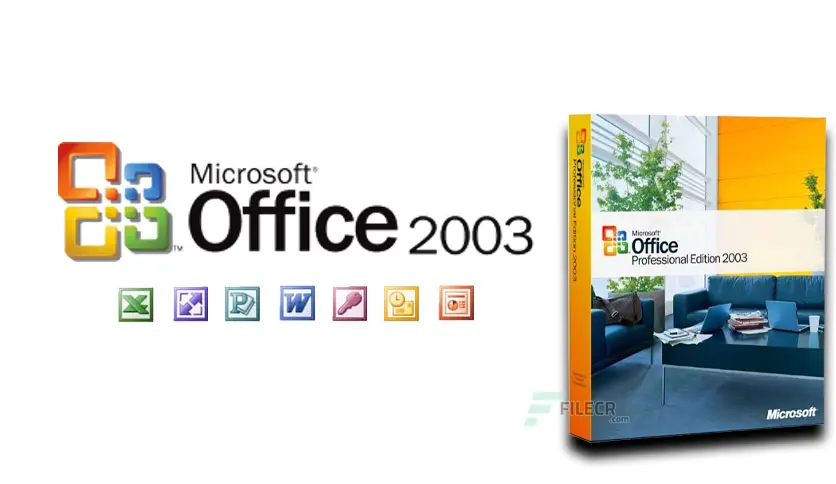
2001, May 31
Microsoft Office XP
Microsoft Office XP (codenamed Office 10) is an office suite which was officially revealed in July 2000 by Microsoft for the Windows operating system. Office XP was released to manufacturing on March 5, 2001, and was later made available to retail on May 31, 2001, less than five months prior to the release of Windows XP. It is the successor to Office 2000 and the predecessor of Office 2003. A Mac OS X equivalent, Microsoft Office v. X was released on November 19, 2001.
New features in Office XP include smart tags, a selection-based search feature that recognizes different types of text in a document so that users can perform additional actions; a task pane interface that consolidates popular menu bar commands on the right side of the screen to facilitate quick access to them; new document collaboration capabilities, support for MSN Groups and SharePoint; and integrated handwriting recognition and speech recognition capabilities. With Office XP, Microsoft incorporated several features to address reliability issues observed in previous versions of Office. Office XP also introduces separate Document Imaging, Document Scanning, and Clip Organizer applications. The Office Assistant (commonly known as "Clippy"), which was introduced in Office 97 and widely reviled by users, is disabled by default in Office XP; this change was a key element of Microsoft's promotional campaign for Office XP.
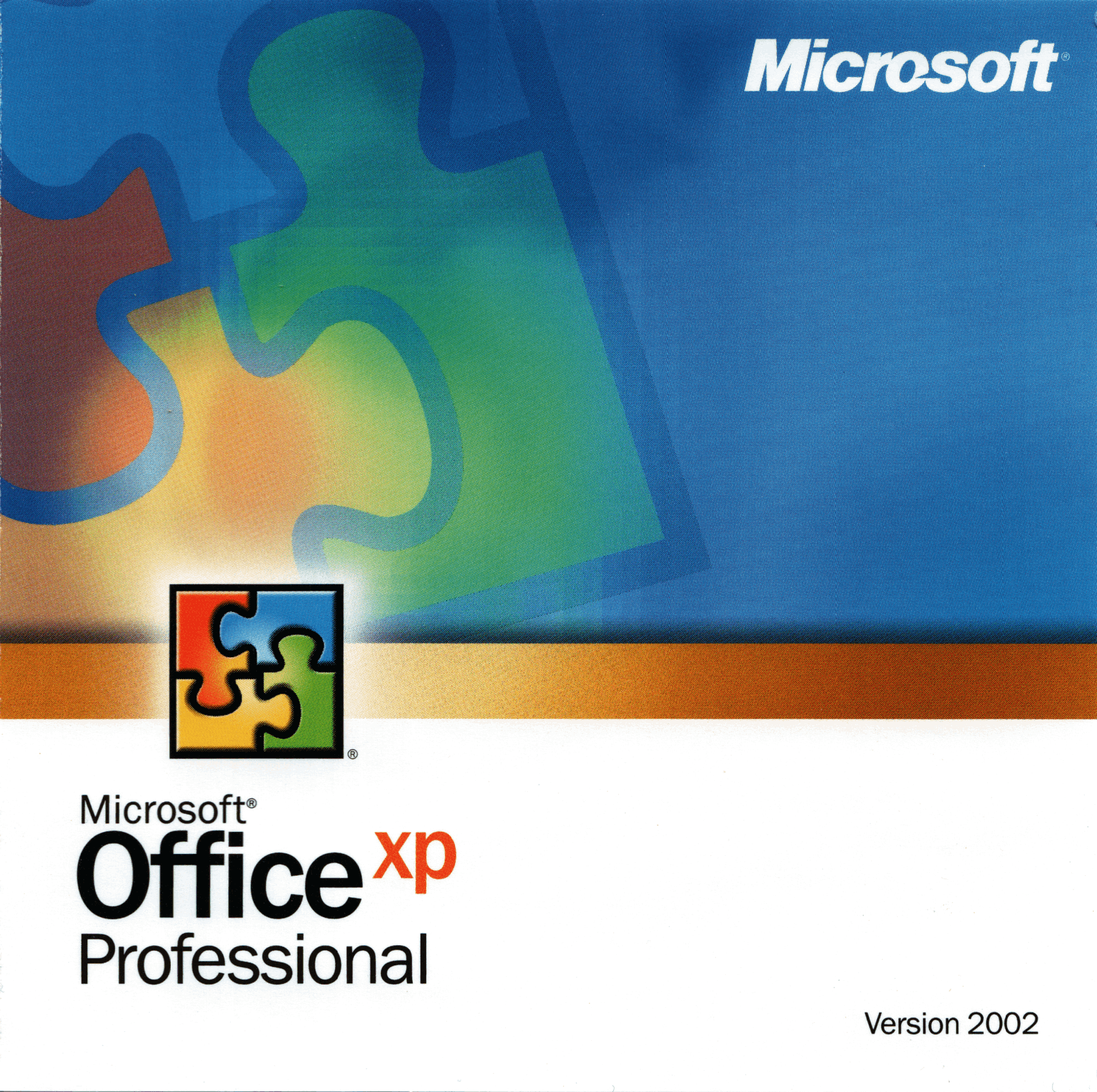
1999, June 7
Microsoft Office 2000
Microsoft Office 2000 (version 9.0) is a release of Microsoft Office, an office suite developed and distributed by Microsoft for the Windows family of operating systems. Office 2000 was released to manufacturing on March 29, 1999, and was made available to retail on June 7, 1999. It is the successor to Office 97 and the predecessor to Office XP. A Mac OS equivalent, Microsoft Office 2001, was released on October 11, 2000.
Office 2000 is incompatible with Windows NT 3.51 and earlier versions of Windows. Office 2000 requires Windows 95 or Windows NT 4.0 SP3 at the minimum. It is not officially supported on Windows Vista or later versions of Windows. It is the last version of Microsoft Office to support Windows 95 and Windows NT 4.0 SP3 as the following version, Microsoft Office XP only supports Windows NT 4.0 SP6 or later.
Microsoft released three service packs for Office 2000 throughout its life cycle. The first update was called Service Release 1 (SR-1), while subsequent updates were referred to as service packs. Mainstream support for Office 2000 ended on June 30, 2004, and extended support ended on July 14, 2009.
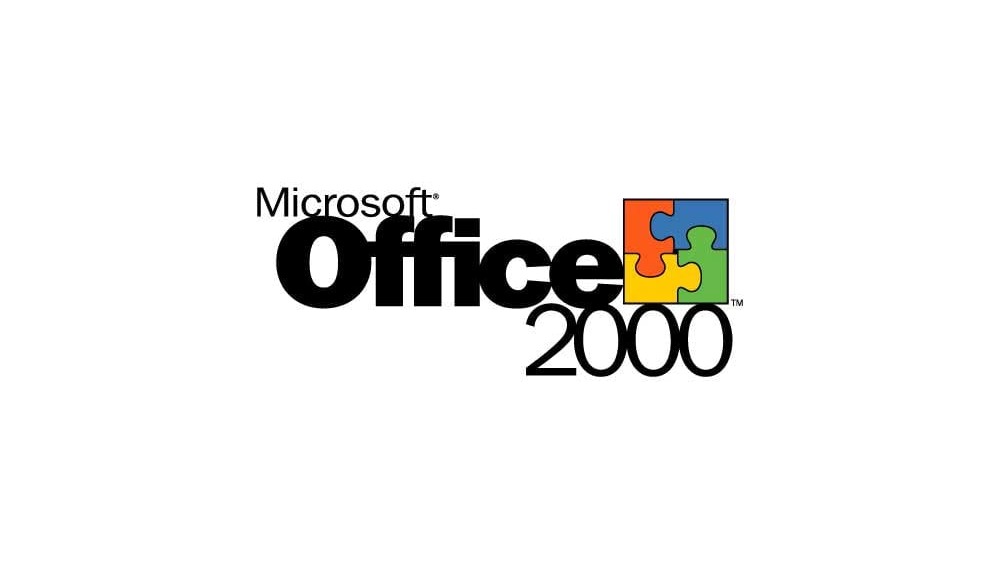
1996, November 19
Microsoft Office 97
Microsoft Office 97 (version 8.0) is the fifth major release for Windows of Microsoft Office, released by Microsoft on November 19, 1996. It succeeded Microsoft Office 95 and preceded Microsoft Office 2000 in 1999. A Mac OS equivalent, Microsoft Office 98 Macintosh Edition, was released on January 6, 1998. Microsoft Office 97 became a major milestone release for introducing new features and improvements over its predecessor.
The suite is officially compatible with Windows NT 3.51 SP5, Windows 95 or later. It is not officially supported on Windows XP or later versions of Windows. It is the last version of Microsoft Office to support Windows NT 3.51 SP5 and Windows NT 4.0 RTM–SP2; as the following version, Microsoft Office 2000 only supports Windows 95, Windows NT 4.0 SP3 or later.
Two Service Releases (SR-1 and SR-2) have been released for Office 97; SR-2 solves the year 2000 problem in Office 97.
Mainstream hotfix support for Office 97 ended on August 31, 2001, while extended hotfix support ended on February 28, 2002. Assisted support options and security updates for Office 97 ended on January 16, 2004.
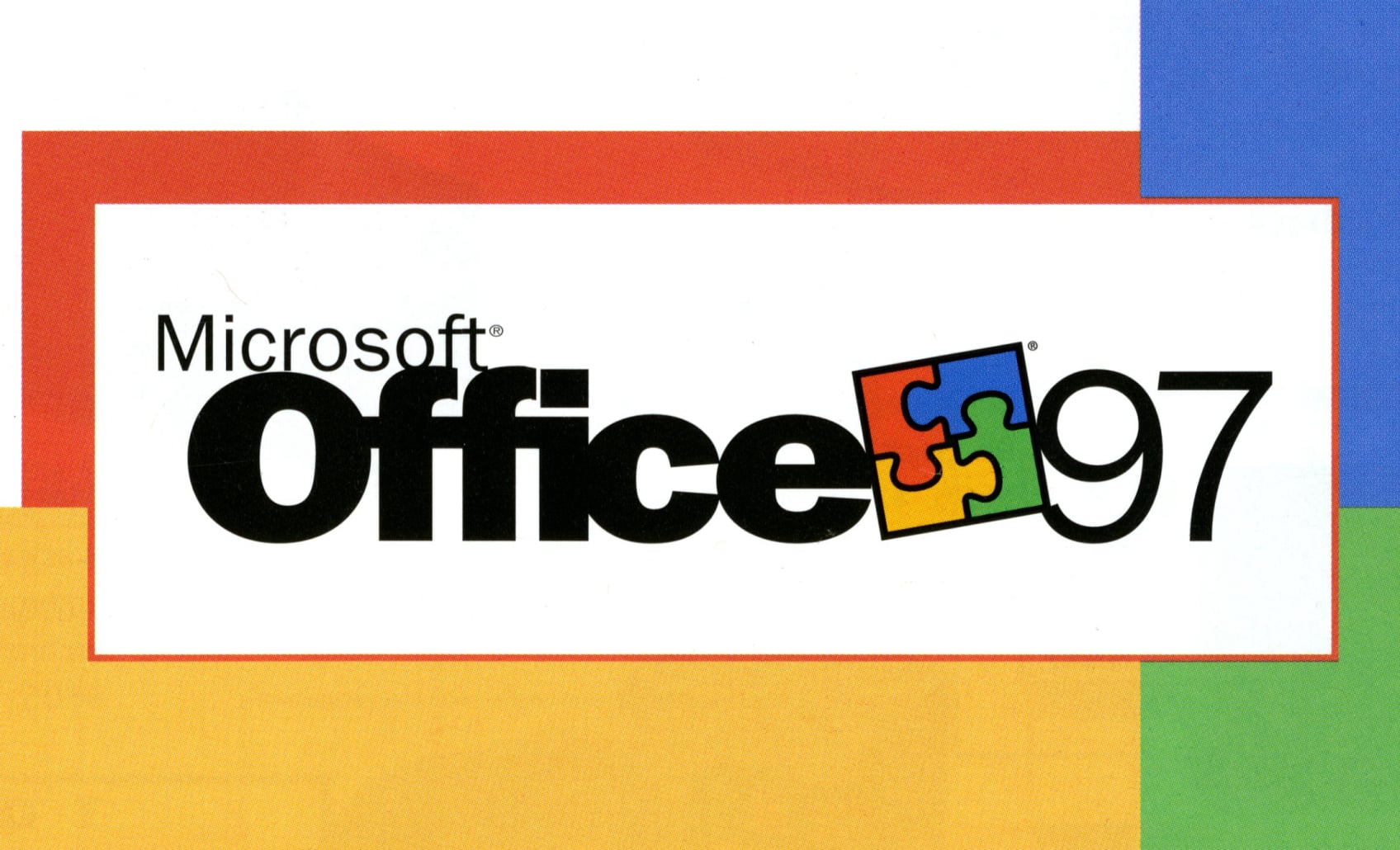
1995, July 24
Microsoft Office 95
Microsoft Office 95 (version 7.0) is a major release of Microsoft Office, released by Microsoft on August 24, 1995, shortly after the completion of Windows 95. It is the successor to both Office 4.2 and 4.3 including their Windows NT versions. While designed specifically for Windows 95, it is compatible with Windows NT 4.0, which debuted in 1996. As it is a 32-bit program suite, it does not run on Windows 3.x or earlier versions of Windows, which use a 16-bit architecture. It is not officially supported on Windows NT 3.1 or Windows NT 3.5. It is officially supported on Windows NT 4.0, Windows Me, and Windows 2000. Support for Windows XP or later versions of Windows was never officially provided.
Office 95 was succeeded by Office 97 on November 19, 1996. Support for Microsoft Office 95 ended on December 31, 2001, the same day as Windows 95. It is the last version of Microsoft Office to support Windows NT 3.51 RTM–SP4; as the following version, Microsoft Office 97 only supports Windows NT 3.51 SP5 or later.
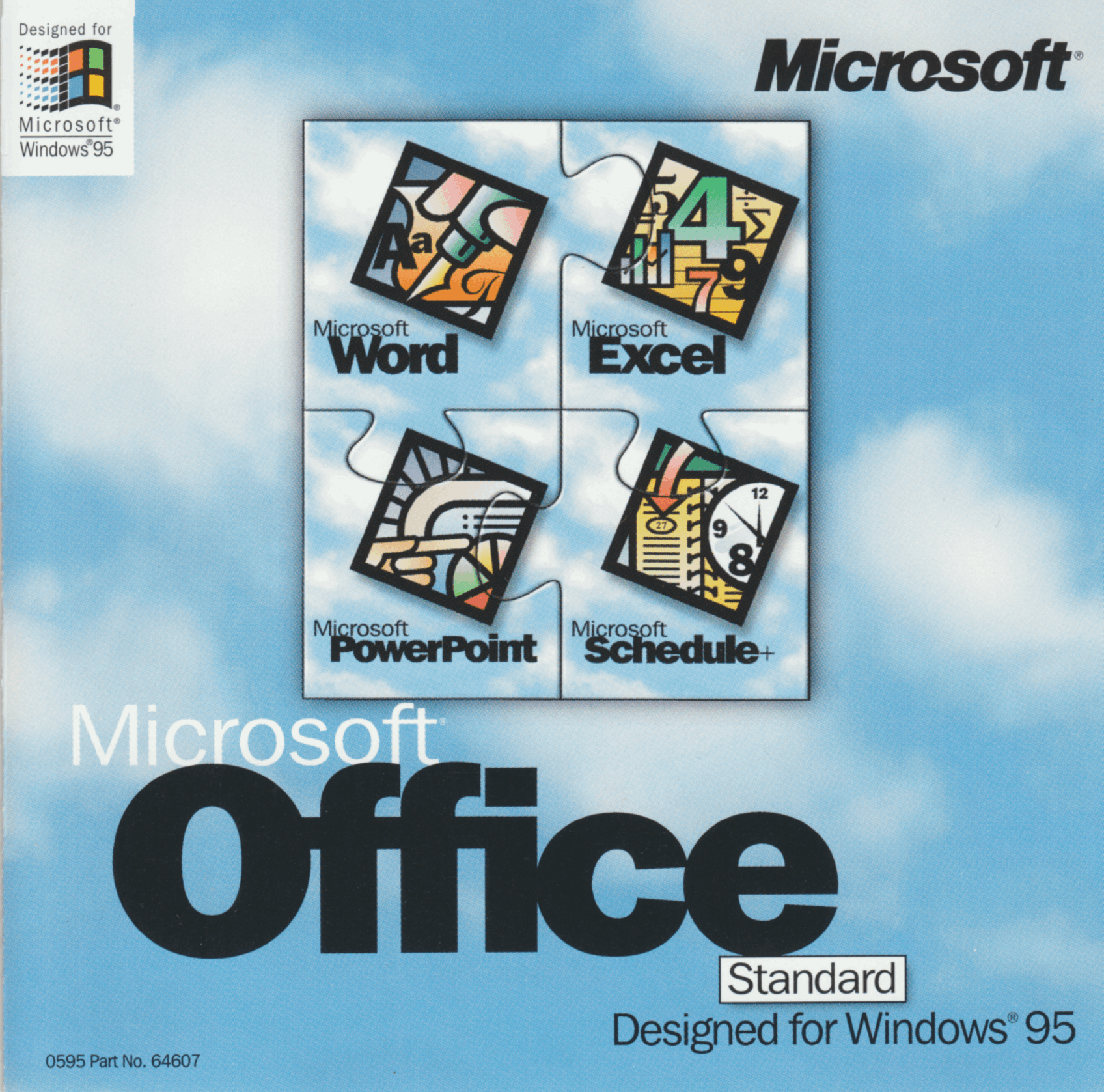
1994, July 3
Microsoft Office for NT 4.2
Microsoft Office 4.2 completes the transition started with Office 4.0 (they skipped 4.1). All of the Office components now support OLE2 and have consistent user interfaces between platforms and applications.
Office 4.2 includes Word 6.0, Excel 5.0, and PowerPoint 4.0. It does NOT include Microsoft Access.
Office 4.2 was released for Windows 3.1, the Apple Macintosh, and i386/Alpha Windows NT. (In the NT package, PowerPoint is still 16-bit)
Later 4.2 releases were rebadged as "Microsoft Office 4.2 Standard" and sold along side "Microsoft Office 4.3 Professional".. The main difference was the addition of Microsoft Access. There was never a "Professional" Office 4.2. Likely the reason for this was it let them keep the Macintosh version the same, as Microsoft Access was never ported to the Mac.
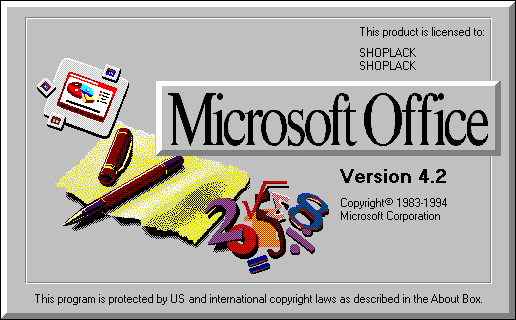
1994, June 2
Microsoft Office 4.3
Microsoft Office 4.3 Professional is basically the same as Office 4.2, except it includes Microsoft Access 2.0.
Version 4.3 was sold as a "Professional" edition along side 4.2 as a "Standard" edition. This is likely because Microsoft Access, and therefore Office 4.3, was never available for the Macintosh.
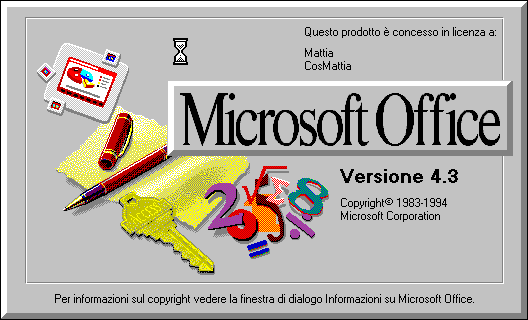
1994, January 17
Microsoft Office 4.0
Microsoft Office 4.0 includes Word 6.0, Excel 4.0a, PowerPoint 3.0, Microsoft Mail, and Microsoft Office Manager. Purchasers of this version received a coupon to upgrade to Excel 5.0 and PowerPoint 4.0, as they were available shortly after.
There may also have been a "Professional" version that included Access 1.1.
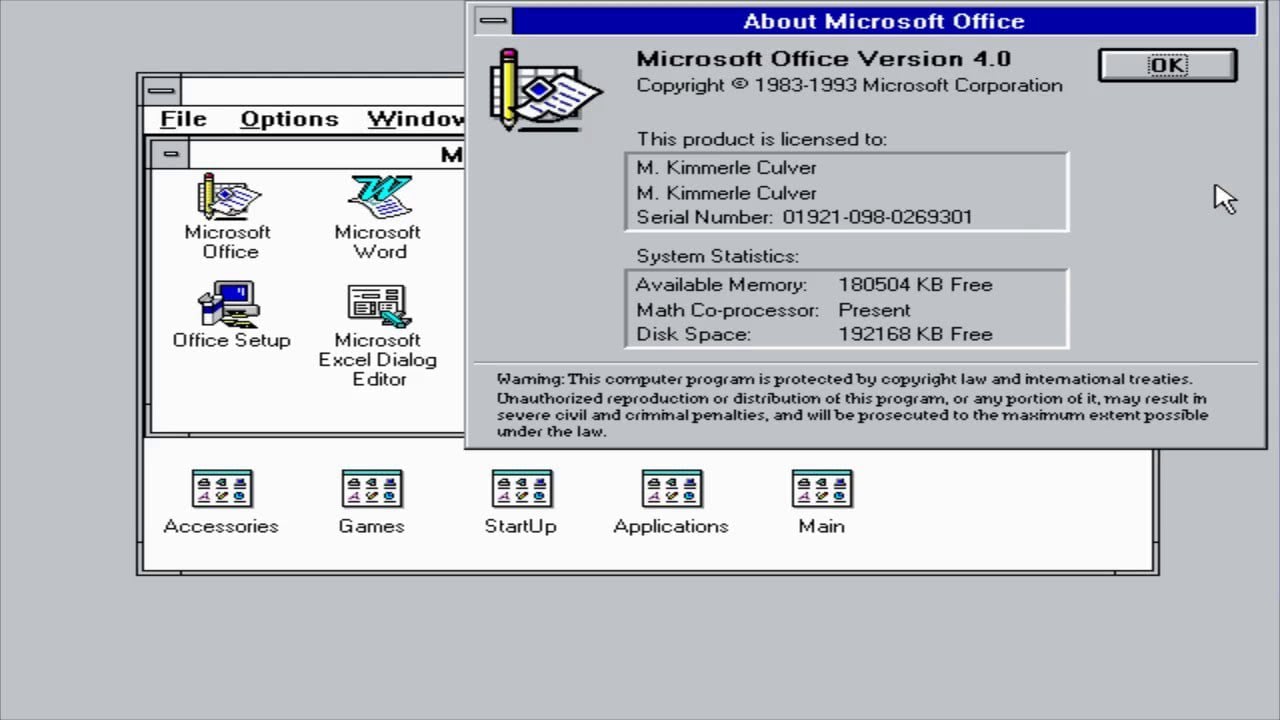
1992, August 30
Microsoft Office 3.0
Microsoft Office 3.0 was a release of Microsoft Office. It was the second major release for the Microsoft Windows operating system and the third on the Macintosh, preceding Microsoft Office 4.0. Omitting version 2 entirely on Windows, Microsoft released Office 3.0 on August 30, 1992. Previously, these components were distributed separately for Windows, and it was with Microsoft Office that they were combined as a full office suite.
Its main components included Word 2.0c, Excel 4.0a, PowerPoint 3.0, and Mail, a network messaging client. Versions for Macintosh were also updated to Word 5.1, which didn't exist for Windows.
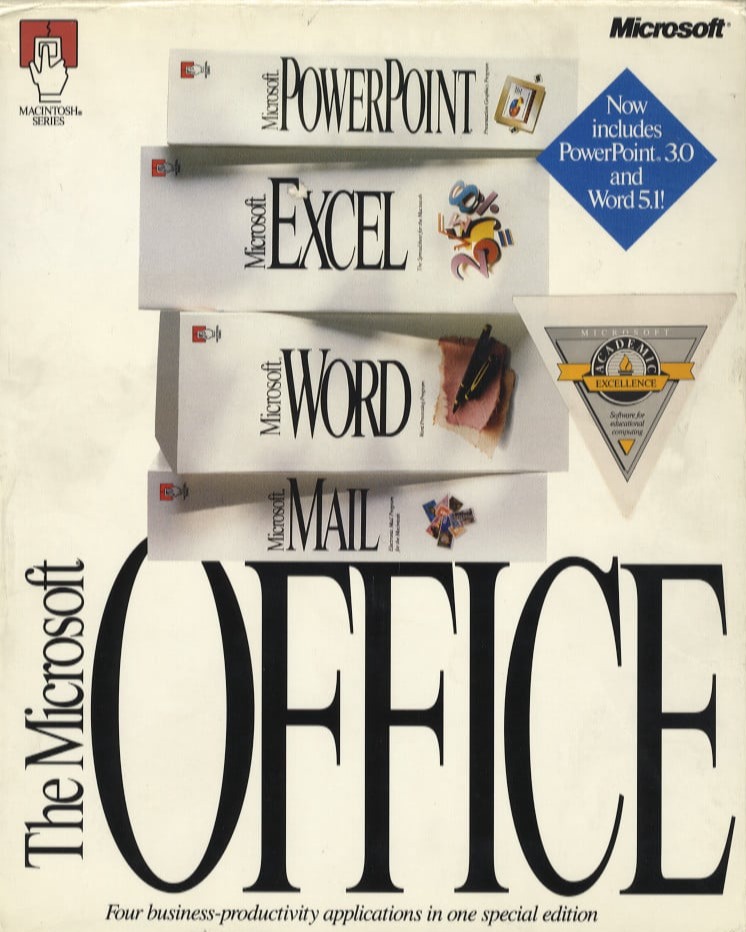
1992
Microsoft Office 2.5
Microsoft Office 2.5 is a version of Microsoft Office, released in early 1992. Included applications in this release are Word 2.0a, Excel 4.0 and PowerPoint 2.00E. Microsoft Mail is not included, but instead a coupon was provided for Mail 2.1. This release drops support for Windows 3.0.
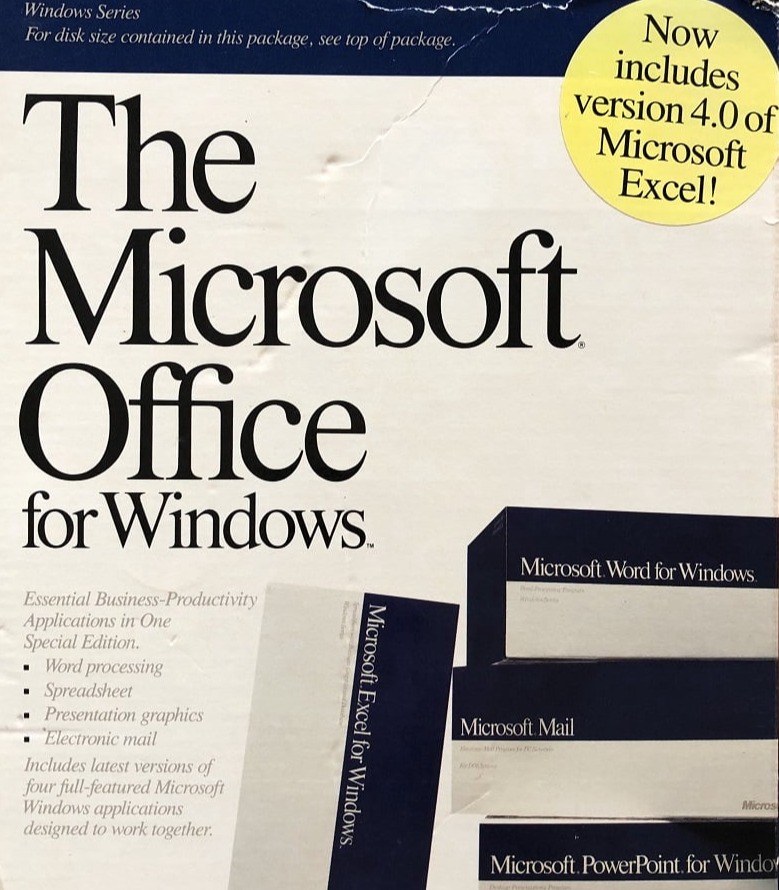
1991, July 8
Microsoft Office 1.6
Microsoft Office 1.6 included Word 1.1, Excel 3.0 and PowerPoint 2.0.
In addition to the programs previously offered, it included Microsoft Mail for PC Networks 2.1.
Last version for Windows 3.0.
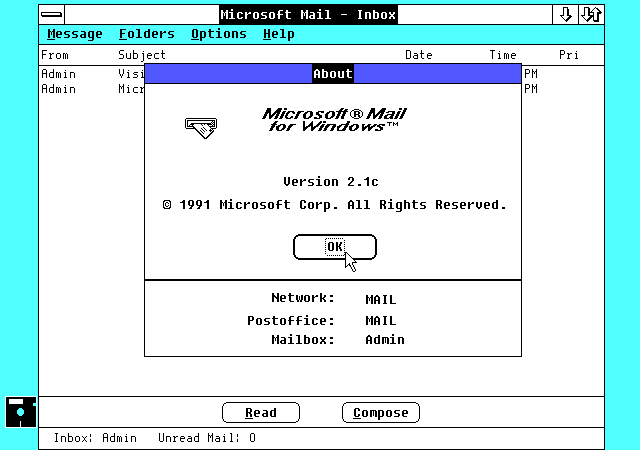
1991, March 4
Microsoft Office 1.5
Microsoft Office for Windows 1.5 updated the suite with Microsoft Excel 3.0.
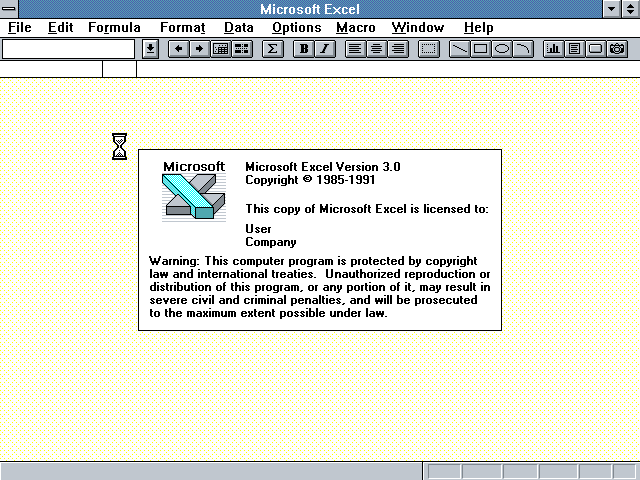
1990, October 1
The Microsoft Office for Windows
Microsoft Office for Windows started in October 1990 as a bundle of three applications designed for Microsoft Windows 3.0: Microsoft Word for Windows 1.1, Microsoft Excel for Windows 2.0, and Microsoft PowerPoint for Windows 2.0.
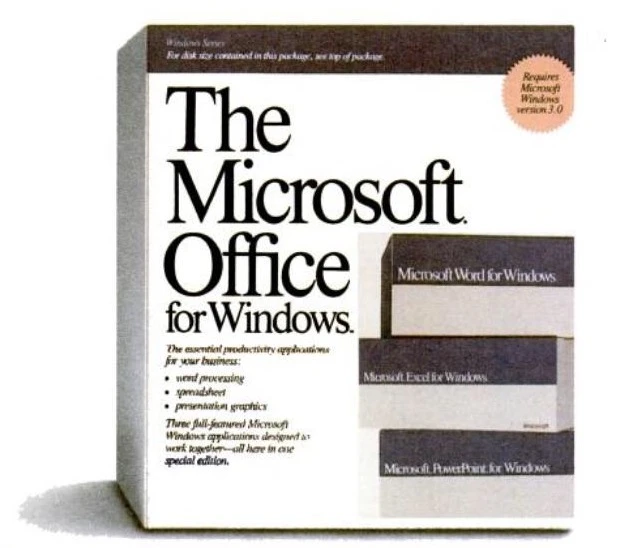
1988, August 1
COMDEX
Microsoft Office was first announced by Bill Gates on August 1, 1988, at COMDEX in Las Vegas. Initially a marketing term for an office suite (bundled set of productivity applications), the first version of Office contained Microsoft Word, Microsoft Excel, and Microsoft PowerPoint.
